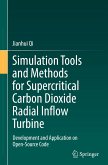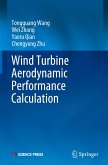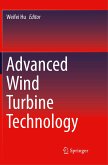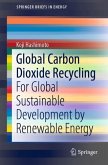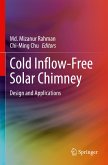To protect the Earth, China has launched its target of peaking carbon dioxide emissions by 2030, and achieving carbon neutrality by 2060 , which greatly encourages the use and development of renewable energy.
Supercritical CO2 power cycle is a promising technology and the radial inflow turbine is the most important component of it, whose design and optimisation are considered as great challenges. This book introduces simulation tools and methods for supercritical CO2 radial inflow turbine, including a high fidelity quasi-one-dimensional design procedure, a non-ideal compressible fluid dynamics Riemann solver within open-source CFD software OpenFOAM framework, and a multi-objective Nelder-Mead geometry optimiser. Enhanced one-dimensional loss models are presented for providing a new insight towards the preliminary design of the supercritical CO2 radial inflow turbine. Since the flow phenomena within the blade channels are complex, involving fluid flow, shock wave transmission and boundary layer separation, only employing the ideal gas model is inadequate to predict the performance of the turbine. Thus, a non-ideal compressible fluid dynamics Riemann solver based on OpenFOAM library is developed. This book addresses the issues related to the turbine design and blade optimization and provides leading techniques. Hence, this book is of great value for the readers working on the supercritical CO2 radial inflow turbine and understanding the knowledge of CFD and turbomachinery.
Supercritical CO2 power cycle is a promising technology and the radial inflow turbine is the most important component of it, whose design and optimisation are considered as great challenges. This book introduces simulation tools and methods for supercritical CO2 radial inflow turbine, including a high fidelity quasi-one-dimensional design procedure, a non-ideal compressible fluid dynamics Riemann solver within open-source CFD software OpenFOAM framework, and a multi-objective Nelder-Mead geometry optimiser. Enhanced one-dimensional loss models are presented for providing a new insight towards the preliminary design of the supercritical CO2 radial inflow turbine. Since the flow phenomena within the blade channels are complex, involving fluid flow, shock wave transmission and boundary layer separation, only employing the ideal gas model is inadequate to predict the performance of the turbine. Thus, a non-ideal compressible fluid dynamics Riemann solver based on OpenFOAM library is developed. This book addresses the issues related to the turbine design and blade optimization and provides leading techniques. Hence, this book is of great value for the readers working on the supercritical CO2 radial inflow turbine and understanding the knowledge of CFD and turbomachinery.


